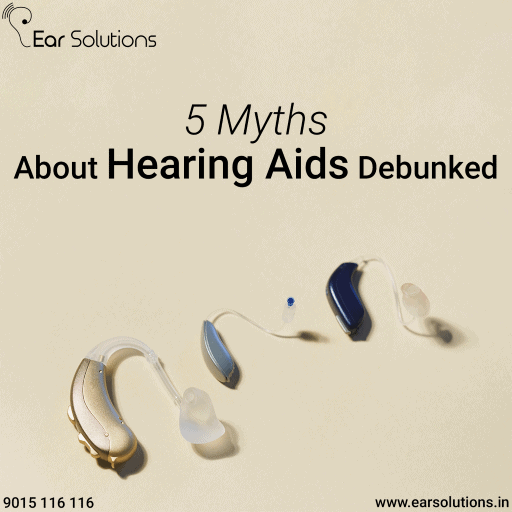
Hearing loss is a common problem that affects millions of people worldwide. Unfortunately, many people with hearing loss do not seek treatment or delay it due to misconceptions or myths about hearing aids. These myths can prevent people from seeking the help they need to improve their quality of life. In this article, we will debunk 5 common myths about hearing aids.
Myth 1: Hearing aids are big and bulky
Many people think of hearing aids as large and unsightly devices that are visible from a distance. However, this is not true anymore. Today’s hearing aids come in various sizes and shapes, including discreet and nearly invisible options. In-the-ear (ITE) and completely-in-the-canal (CIC) hearing aids are small and fit inside the ear canal, making them almost invisible to others. There are also receiver-in-canal (RIC) and behind-the-ear (BTE) models that are sleek and discreet.
Myth 2: Hearing aids are only for the elderly
Another common myth is that hearing aids are only for older adults. While age-related hearing loss is prevalent, people of all ages can experience hearing loss due to various factors such as noise exposure, genetics, and medical conditions. Hearing aids can benefit anyone with hearing loss, regardless of their age.
Myth 3: Hearing aids restore hearing to normal
Hearing aids cannot restore hearing to normal levels, but they can significantly improve hearing and communication ability. Hearing aids amplify sound, making it easier to hear and understand speech and other sounds. With modern hearing aid technology, people with hearing loss can hear sounds that they may have missed before, allowing them to participate in conversations and activities they may have avoided.
Myth 4: Hearing aids are uncomfortable to wear
Many people believe that hearing aids are uncomfortable and can cause pain or irritation in the ear. However, modern hearing aids are designed to fit comfortably and securely in the ear or behind the ear. Hearing aid manufacturers use advanced materials to ensure a comfortable fit and reduce irritation. Additionally, the hearing aid fitting process involves adjusting the settings and fit of the hearing aid to ensure maximum comfort and effectiveness.
Myth 5: Hearing aids are too expensive

The cost of hearing aids can vary depending on the type, features, and level of technology. While some hearing aids can be costly, there are options available at different price points. Additionally, many insurance plans cover some or all of the cost of hearing aids, and there are financing options available to make them more affordable. Investing in hearing aids can be a wise decision, as they can improve quality of life and prevent other health issues associated with untreated hearing loss.
In conclusion, it is essential to understand that hearing aids are a valuable tool for anyone with hearing loss, regardless of their age. Modern hearing aids come in various sizes and shapes, and they can significantly improve hearing and communication ability. It is crucial to debunk the myths surrounding hearing aids and seek treatment for hearing loss promptly. If you or a loved one is experiencing hearing loss, consider speaking with a hearing healthcare professional to discuss your options for improving your hearing and quality of life.




